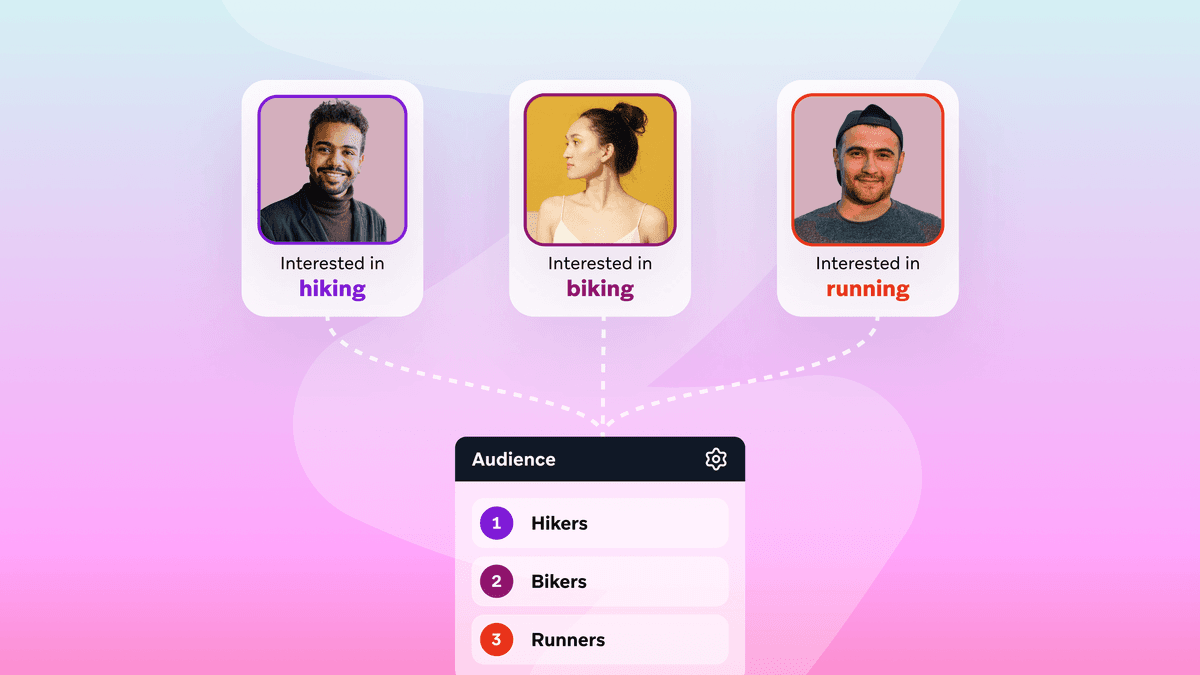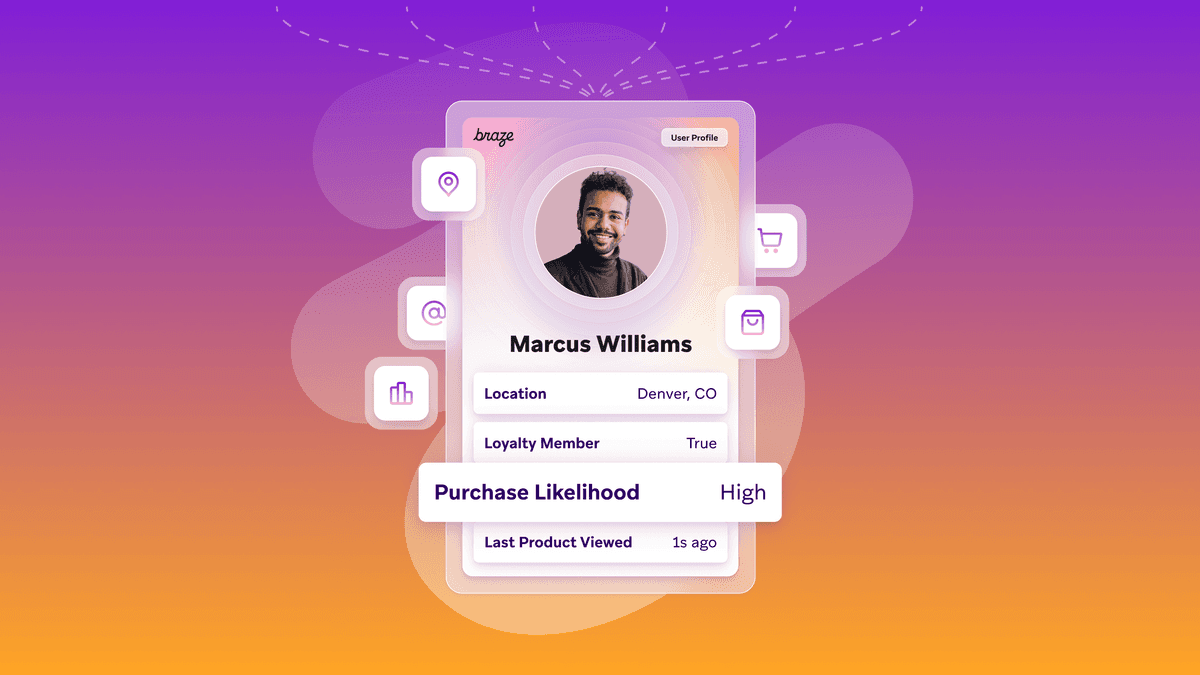What's Deep Linking?
Published on December 19, 2018/Last edited on January 16, 2025/8 min read


John Tintle
Marketing Director at BranchTo help give our readers a better understanding of this key topic we’ve asked an expert, John Tintle of deep linking leaders Branch, to walk through the nuts and bolts of deep linking, and explain how to make it work effectively for you and your customers. Enjoy!
What is deep linking and how is it different from regular linking?
Deep links are simply links that lead users to specific pages, pieces of content, or experiences within a mobile app. That means that when you tap on a push notification announcing a sale on t-shirts, you’re led to the section of the app that’s related to that sale, rather than ending upon the generic app homepage. Deep links are a key part of the seamless customer journey on mobile, serving as essential connective tissue between a given message and the specific experience that’s intended to follow.
Ok, so what’s the problem?
Most information on the web exists in the convenient packaging of HTML, which effectively means that most web pages speak the same language. They’re able to “talk” to each other without issue. Web links, however, don’t work with native mobile apps. There isn’t a universal language or linking technology that allows you to move from web-to-app or even app-to-app. This limits your ability to create the seamless, cross-channel experiences that smart marketers are striving to create.
That’s where deep linking providers like Branch come in. Mobile app deep links (also known simply as “deep links”) point to content inside an app. For example, if you want to share a pair of shoes from an app with a friend, you can send a deep link that brings your friend directly to those shoes in the app. Without a deep link, your friend would have to find the app on the App Store or Play Store, open the app to the homepage, locate the Search function, and then try to find the same pair of shoes you did.
Are there different types of deep links?
Yes! The three main types are traditional, deferred, and contextual.
- Traditional deep links can route users to app content as long as the app is already installed when the link is opened. This means traditional deep links don't work if the user doesn’t have the app, and will show either an error or a fallback page.
- Deferred deep links can route users to content even if the app is not installed when the link is opened. The link will first redirect to the App Store or Play Store to download the app, and then take the user to the specific “deferred” content immediately after first launch.
- Contextual deep links have all the functionality of deferred deep links, plus much more. Contextual deep links store information about where a user wants to go, where the link was clicked, who originally shared the link, and an almost unlimited amount of custom data. Contextual links add value for both app developers and users. App developers can build powerful features beyond just simple content linking, including personalized welcomes (where you see your friend's recommendation in the app if they share an item with you) and referral programs. App users benefit because apps can provide better experiences and more relevant information.
How does deep linking benefit customer engagement?
What we really want out of our deep links is to give our users a great experience that increases the chance they download the app, and that they’ll sign up for an account, purchase a product, or simply come back to our app over and over again.Conceptually, deep linking isn’t new. What distinguishes today’s leading solutions from yesterday’s best attempts is the ability to deliver increasingly targeted, personalized options spanning an array of proven use cases. As more audiences engage cross-platform and cross-channel (for example, from web-to-app and app-to-app) with greater frequency, innovations in deep linking are driving higher LTV than ever before.
Successful deep linking can:
- Support a more personalized onboarding process by helping marketers understand how they came to download the app (think: insights on their interests, social networks they frequent, or what campaign resonated with them enough to get the download).
- Extend the reach of your outreach by connecting messages in a cross-channel campaign which creates a more cohesive story, voice, and message for consumers.
- Connect across platforms like mobile app and mobile web. Encourage active web visitors to get your app by highlighting an app-only feature or piece of content, then use a deep link to allow them to automatically open the appropriate page after their download. Promote your website’s redesign in an in-app message, then link to an in-browser message on the homepage that walks customers through the updates. The possibilities are limitless.
Illustrated below is a common deep linking example. In it, a user taps a banner on the mobile web, installs the app (if necessary), and proceeds directly to the desired in-app content, all while remaining on-course.

Ultimately, it’s about correctly setting user expectations and then using care with deep linking to ensure that you’re sending them somewhere where those use expectations will be paid off. If you’re doing that, you’re golden…and if you’re not, your customers are likely going to go elsewhere.
What advice do you have for brands looking to start using deep links?
Here are three deep linking essentials we’ve gathered while powering results for more than 3 billion global users and 40,000 apps:
- Not all deep links are created equal. If you’re new to the deep linking game or have a legacy solution that’s on autopilot, it’s worth reassessing just how accurate your links really are. Truth is, unless you’ve implemented the latest technology, a large proportion of the links you think are working may in fact be broken and leading audiences to a digital dead end. (Up to 60%, by recent estimates.)
- Control and flexibility win the clicks. Marketers using the latest deep linking and deferred deep linking solutions are able to seamlessly connect users to specific in-app content and products, either upon click or immediately following install. When considering average user conversion costs in the $60-100 range, it’s hard to overstate the importance of maintaining control over cross-platform experiences.
- No two user journeys are exactly the same. In an app market devoid of second chances, accurately linking to personalized pre- and post-install experiences is often the difference between happy customers and lost opportunities. The ticket to deep linking success is combining audience-specific, granular insights with an ability to quickly take action. Net: Conversions will continue shifting to brands with the linking and analytics tools to see, think, and do at a moment’s notice.
Already an avid deep linker and looking to up your strategy? Having been in the driver’s seat throughout the evolution of deep linking, we’ve learned how important a detailed vision and clear perception of risk really is. Here are four strategic recommendations worth keeping in mind as we move into 2019:
- Embrace cross-platform. Cross-platform users spend 2.2x more $ and have a 10% higher retention rate than their single-platform counterparts. If your deep-linking tech doesn’t work cross-platform, then your marketing isn’t going to deliver the ROI you need.
- Beware of unmarked dangers. There’s a ton of fear, uncertainty, and doubt in the mobile market, much of it intentionally sowed. The best way to separate truth from fiction is with data and demos, and by digging into how the deep linking tech you’re using (or considering) really works. Leading solutions providers emphasize real-world applicability as well as future-ready features, and proven results over dubious claims. It pays to know the difference.
- Trust your dashboard. One of the metrics we frequently reference in deep linking conversations is click-to-app open rate. If all users are being sent directly to an app via an accurate link, then the click-to-open rate should be 100%. If not, then chances are those users are being sent to the mobile web (not ideal) or an error page (really not ideal).
- Commit for the long haul. Mobile app users convert 3x more than mobile web users, and spend 20x more time in apps. Best-in-class apps are testing, learning, and building dedicated stores of audience knowledge every day. They iterate to create user value and continually refine everything from their campaigns to onboarding, sharing, and more. If this is you, great; if not, you’ll want to add cross-platform deep linking as a top priority in 2019 or risk leaving app conversions on the table.
Anything else?
While links aren’t the sole ingredient in successful marketing campaigns (differentiated features, benefits, positioning, and messaging still matter a great deal), they have become a vital component in efforts to increase ROI and customer conversions. Here’s hoping this innovation category helps turn your app, and by extension your brand, into a digital juggernaut. To learn more about the advantages of advanced deep linking, visit branch.io.
Related Tags
Be Absolutely Engaging.™
Sign up for regular updates from Braze.




